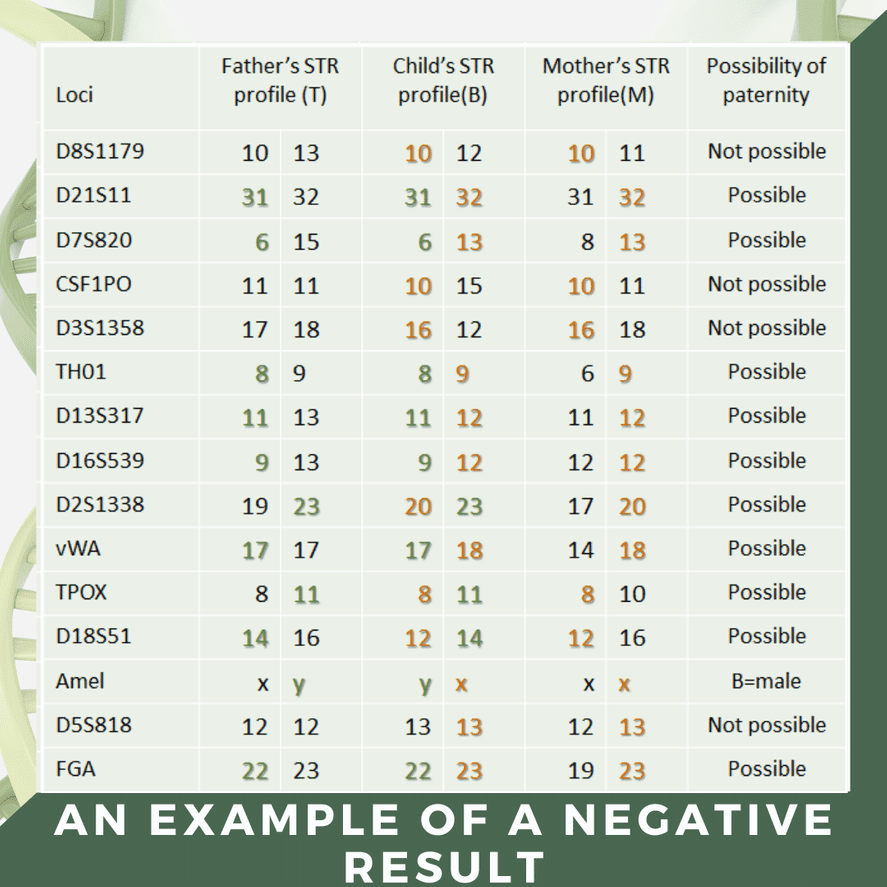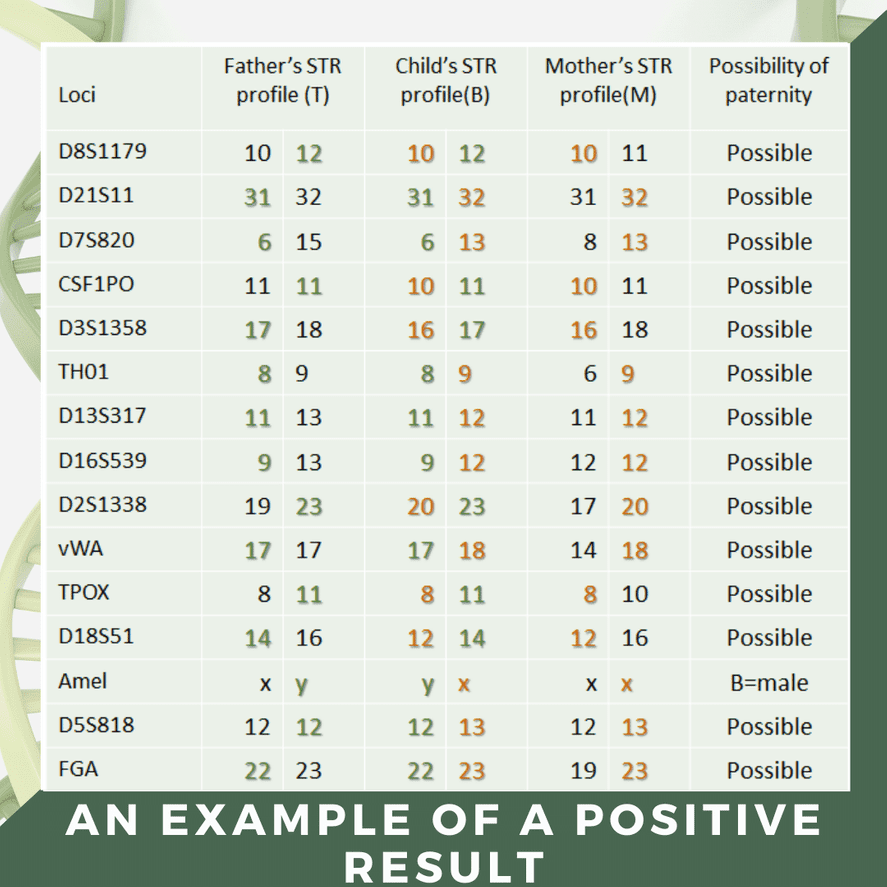Interpretation of results
What does a negative result mean?
Paternity can be ruled out (negative result) if the child’s DNA profile has at least two or more DNA loci that do not match the result of the possible father. In this case, there is no doubt that the man tested is NOT the child’s biological father.
Example of a negative result:

CONCLUSIONS in the case of negative paternity test:
Conclusions after the testing of DNA sample T, M and B:
Sample B comes from a male.
Likelihood ratio = 0.
The probability that person Y (sample T) could be the biological father of person B (sample B) has been ruled out.
What does a positive result mean?
Paternity can be confirmed if in all DNA loci tested one of the results of the child coincides with the result of the possible father, but the other — with the result of the mother. It is important to understand that a positive test result always has a very high statistical probability (usually from 99.99 to more than 99.9999999999%), but never 100%, because in theory, there is a very small probability that there are other men in the world would produce the same result in the tested DNA loci as the subject. To rule out testing error due to existing monozygotic twins, in the case of official paternity tests, one will have to confirm the absence of such twins in the consent form. This is because in these cases, the methods used in our testing do not allow us to distinguish two monozygotic twins who are virtually genetically identical.
Example of a positive result:

CONCLUSIONS in the case of a positive paternity test:
Conclusions after the testing of DNA sample T, M and B:
Sample B comes from a male.
Likelihood ratio = 668310087854.37.
The probability that person Y (sample T) is the biological father of person B (sample B) is 99.99999999997104%.
Radušies jautājumi par mūsu piedāvātajiem testiem?
Uzdod mums jautājumu!